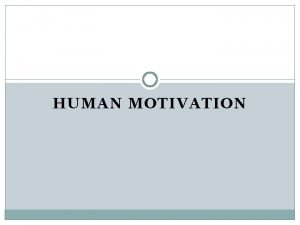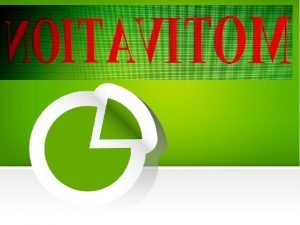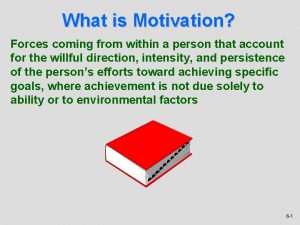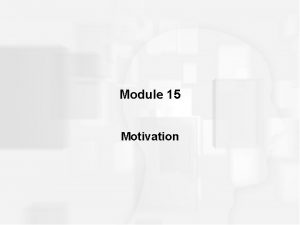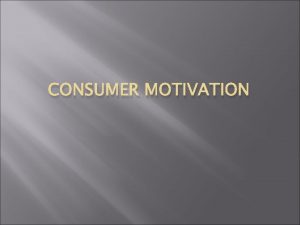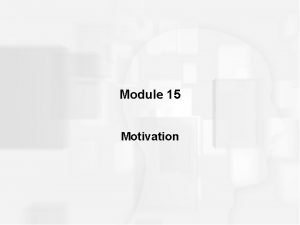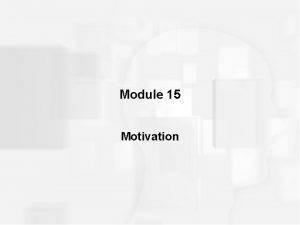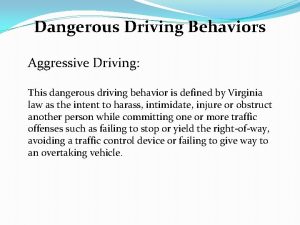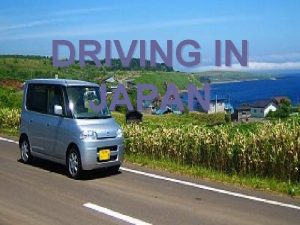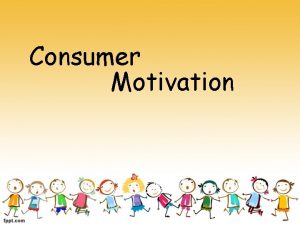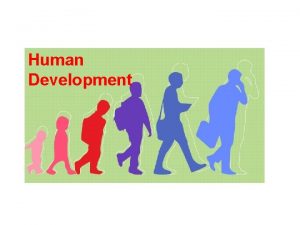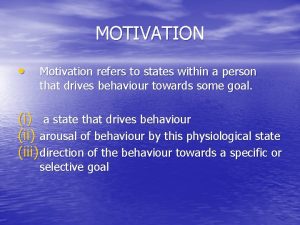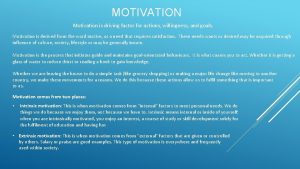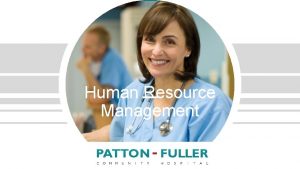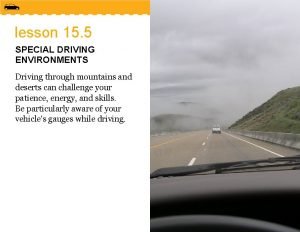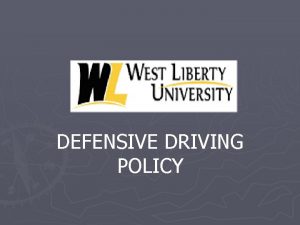HUMAN MOTIVATION MOTIVATION Motivation refers to the driving























- Slides: 23

HUMAN MOTIVATION

MOTIVATION Motivation refers to the driving and pulling forces which results in persistent behavior directed towards particular goal. Motivation - the process of arousing and sustaining goal-directed behavior.

What is motive? Motive is an energetic force which moves a person to act. (the activating force for motivation). Similar older terms for motive are – needs, drives. Features of motive a) we never observe them directly. b) They are inferences from behavior. c) We may or may not be aware of them.

Types of Motives Primary motives: These are physiological or basic needs as they are essential for survival. Eg Hunger, thirst, pain etc Stimulus motives: Inborn but are not necessary for survival e. g Curiosity, exploration, manipulation, physical contact etc. Secondary motives: Learned, acquired and social. It includes achievement, affiliation, aggression, power etc

Intrinsic V/s extrinsic Motivation Intrinsic motivation Goals are internal feelings of effectiveness, competence and self determination Works hard for fun of it , creatively and for satisfaction. Eg: Self actualization motivation, . Extrinsic motivation Directed towards goals external to the person, such as money or grades in school. Excessive reliance on it stifle intrinsic motivation and impair performance.

Biological V/s Psychosocial Motivation Biological Motivation The are fundamental for our survival. They are basically unlearned in nature. � The arousal state is initiated (Departure from homeostasis ) by � hormones – Insulin, Glucagon, Testosterone, Estrogen. � Sensory stimuli (Incentives) – smell of food, image of opposite sex, pain.

Social Motivation The are learned in Social groups (Social learning) Eg: Family, Peers, Teachers. Hence their strength differ greatly from individual to another. They persist, never fully satisfied over the years – determine much of what a person does. Knowledge of social motive dominant in a society may help us understand its history and predicts its future They are innate part of the human species heritage, seem to exist to one degree or another in everyone. They are most powerful and most persistent of all.

Theories Of Motivation Drive theory (Push Theory) 1. Drive theories say that behavior is pushed towards goals by arousal internal states (Drive) within the person or animal. 2. Sources of driving state can be; Inborn / instinctive – proposed by Freud eg: Biological Motivation or Learned – hence they differ from one individual to another. Eg: Addictions. Social Motivation (achievement, power, aggression) 3. Motivational cycle of drive theories- Strength of drive depends upon strength of stimuli

Theories Incentive theory (Pull Theory) 1. Incentive theory stress the ability of the goal to Pull behavior towards them. 2. Incentive is the goal object which motivate behavior, it can be; a) Positive – when one expects pleasure from the attainment. b) Negative – when on expects pleasure from avoidance.

Theories The Opponent – Process Theory (Theory of emotion) 1. The opponent process theory says that we are motivated to seek goals which give us good emotional feelings and avoids goals results in displeasure. 2. Basic to this theory is the observation that many emotionally motivating states are followed by opposing or opposite states.

Optimal Level (Best level) theory (Just Right Theory) Optimal level theory says that behavior is directed towards maintaining an optimal level of arousal or state of homeostasis in internal physiological process. Eg: Work Load

Causes of Motivational Problems Belief that effort will not result in performance Belief that performance will not result in rewards The value a person places on, or the preference a person has for, certain rewards

INSTINCTS Instincts are biological sources of energy that exert demands on the mind. Freud sees instincts as a drive in individuals that compel one to behave in certain ways. The direction of behaviour is influenced by the interaction of instincts, the environment and inhibitory forces (social prohibition).

INSTINCTS Instincts are classified according to their aim, object, source and impetus. Aim: The removal of tension or need (i. e conditions necessary for satisfaction). Object: Incorporate all the activities it takes to get rid of all the need or tension (The action that reduces the instinctual energy).

INSTINCTS Source: The physiological basis of the instinct e. g body need such as need for air, food, survival, preservation. Impetus: The force or strength of the particular instinct determined by the intensity of the need. For example; Hunger is a life instinct whose aim is to obtain food, whose object may be a boiled rice with whose source is the physiological/hormonal processes that stimulate hunger.

Types of Instinct Life instinct (Eros): these are related to survival and propagation of life (Hunger, thirst, sex etc). Life instinct originates from individuals desire to survive. Death instinct (Thanatos): These are related to destructive energies e. g Violent aggression, suicidal tendencies.

ATTITUDE Attitude is a construct that represents an individual’s degree of like and dislike for something. It is a predisposition to react in a persistent and characteristic manner to some situation, idea, material, object or person. It is a belief or opinion from evaluation of object, person or event.

ATTITUDE Attitude has a great effect on individual’s behaviour. An attitude accompanied by strong feelings are called ‘Sentiments’ Individuals way of reacting to religious rituals, parents, teachers, professions are examples of attitudes.

Types of Attitude Positive attitude: It helps one cope with daily affairs of life. It is a state of mind that is well worth developing and strengthening. It manifests in these manners; Constructive thinking, creative thinking, expecting success, optimism, motivation to accomplish a goal etc Negative attitude: It leads to bitterness, resentment, a purposeless life, ill-health and high level of stress.

Component of Attitudes They are developed on ABC model. Affect: Emotional response that expresses an individual’s degree of preference for an entity. Behaviour: Verbal or typical response/tendency of an individual. Cognition: Cognitive evaluation of individual’s belief about situation/object (Direct experience or observational learning from environment).

Factors influencing Attitude Direct Instruction. Family. Prejudices. Culture Psychological factors e. g idea, value, perception. Personal Experience. Media. Education Religious Institutions. Economic Status and Occupations.

ATTITUDE CHANGE Attitude changes can take place by following methods: Self-perception. Learning theory. Cognitive Dissonance. Persuasion.

THANK YOU
 Motivation refers to
Motivation refers to The term extrinsic motivation refers to reasons to act that
The term extrinsic motivation refers to reasons to act that Motivation refers to forces that
Motivation refers to forces that Motivation refers to
Motivation refers to It is generally refers to human movement
It is generally refers to human movement Hát kết hợp bộ gõ cơ thể
Hát kết hợp bộ gõ cơ thể Frameset trong html5
Frameset trong html5 Bổ thể
Bổ thể Tỉ lệ cơ thể trẻ em
Tỉ lệ cơ thể trẻ em Voi kéo gỗ như thế nào
Voi kéo gỗ như thế nào Chụp phim tư thế worms-breton
Chụp phim tư thế worms-breton Chúa yêu trần thế
Chúa yêu trần thế Các môn thể thao bắt đầu bằng tiếng bóng
Các môn thể thao bắt đầu bằng tiếng bóng Thế nào là hệ số cao nhất
Thế nào là hệ số cao nhất Các châu lục và đại dương trên thế giới
Các châu lục và đại dương trên thế giới Công của trọng lực
Công của trọng lực Trời xanh đây là của chúng ta thể thơ
Trời xanh đây là của chúng ta thể thơ Cách giải mật thư tọa độ
Cách giải mật thư tọa độ 101012 bằng
101012 bằng Phản ứng thế ankan
Phản ứng thế ankan Các châu lục và đại dương trên thế giới
Các châu lục và đại dương trên thế giới Thể thơ truyền thống
Thể thơ truyền thống Quá trình desamine hóa có thể tạo ra
Quá trình desamine hóa có thể tạo ra Một số thể thơ truyền thống
Một số thể thơ truyền thống
